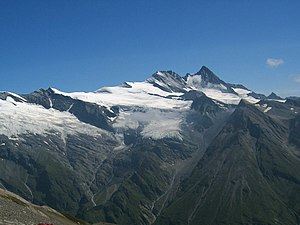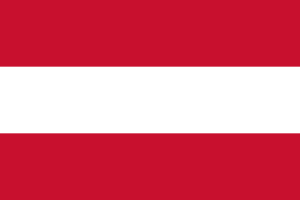Wikijunior Europe: Austria

Austria is a country in Central Europe. It shares borders with Hungary, Slovakia, Czech Republic, Germany, Liechtenstein, Switzerland, Italy and Slovenia. The main language of Austria is German. The capital city is Vienna. Other big cities are Salzburg and Linz. Austria has been part of the European Union since 1995 and uses the Euro as its currency.
Austria's History
[edit | edit source]
During history Austria has been part of Celtic, Roman, Bavarians, Slavs and Avar countries or empires. Between 1278 CE and 1914 Austria was ruled by the Habsburgs, the Austrian Royal family. The 19th century Austrian-Hungarian Empire was very powerful and covered all of today's Austria and Hungary as well as parts or all of Poland, Czech Republic, Slovakia, Slovenia, Romania, Croatia, Italy and other countries. The huge number of ethnic groups in the empire created problems and in 1914 Archduke Franz Ferdinand was assassinated by a Bosnia-Serb in Sarajevo, the capital of present-day Bosnia (then part of the Austro-Hungarian Empire) kicking off World War I.
After World War I the empire split up. Austria's size was reduced to more-or-less today's size and the country was forbidden to unite with Germany. Economic and political problems continued during the 1920s and 1930s and in 1938 Austria became part of Adolf Hitler's Third Reich. World War II crippled Austria resulting in 260,000 military deaths, 65,000 Austrian Jews killed in the Holocaust and 140,000 other Jews fled the country. Austria was officially neutral in the years after the end of the war. Since that time Austria has became a very peaceful and economically successful country and joined the European Union in 1995.
Austria's Geography
[edit | edit source]
The population of Austria is 8,205,533. The total area of Austria is 32,382 sq mi (83,870 km2).
About 3/4 of Austria is covered with mountains and because of this the climate varies greatly from one place to another. Some of Europe's highest mountains, part of the Alps, are located in Austria. The highest mountain in Austria is Großglockner at 3,797 metres. In Eastern Austria the climate is average with cold winters and warm summers. The Western part of Austria's climate changes depending on the conditions of the Atlantic Ocean. Austria is one of the countries in Europe that have the most forest land. 42 percent of the land is covered with forests. Because of this Austria has a wide variety of trees but the wildlife in Austria is scarce. Chamois, deer, and marmot are still present but the bears which used to have a large population are almost gone. Hunting is regulated to protect the remaining animals they have in the country.

Austria's People
[edit | edit source]The official Language of Austria is German. Other popular languages are Slovene, Croatian, and Hungarian. Most of the population's religion is Roman Catholic. Before World War II Austria had a very large Jewish population.
In Austria you are required to go to school from the ages of 6-15. After that you have a few choices for secondary school. You can choose to go to a school that prepares you to go to a technical college for specialized training in certain areas or you can go to a general high school and receive an education which allows you to continue on to a University.
Sights of the Country
[edit | edit source]Austria is one of the world's top tourist destinations. Austria is a great winter sports area, and has many summer music festivals and lake resorts. One of the largest tourist attractions of Austria are the Alps. Most of the tourism that comes to Austria comes from Germany. 9% of Austria's money comes from tourism and it's the 9th biggest country for tourism in the world. The cities of Vienna and Salzburg are popular with cultural visitors.
There are 9 UNESCO World Heritage Sites in Austria including one which is shared with other countries. These world important sites include the historical centres of Vienna, Salzburg, Graz and Schloss Eggenberg and Lake Neusiedl in the south-east of the country.
| Wikijunior Europe • Intro • EU • Geo • People • Language • Facts • Quiz | edit | ||

